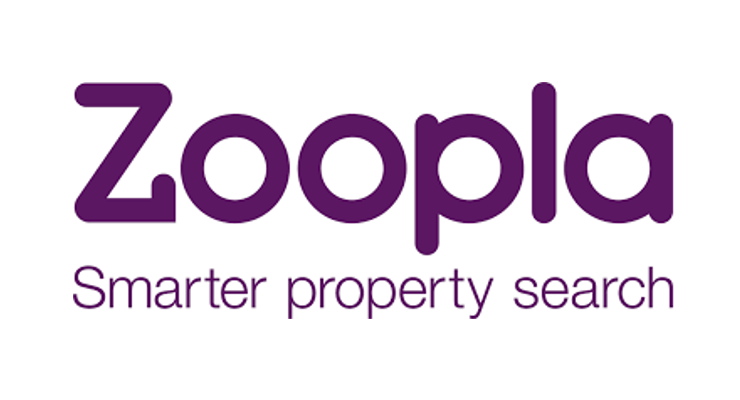Kilmarnock named cheapest area for a first home
Average first-time buyer monthly mortgage payment still £350 more than five years ago, as Kilmarnock named cheapest area for a first home
- The latest data from Rightmove’s weekly mortgage tracker shows that the average first-time buyer mortgage payment is still £350 more each month, or 59% higher, than five years ago despite market improvements
- A typical first-time buyer is currently paying a mortgage of £940 per month, compared with £590 per month five years ago, however, payments are still £155 lower than the peak in July 2023
- Average wage growth has outpaced first-time buyer price rises, increasing borrowing power, however affordability remains very stretched:
- Average earnings have risen by 30% in the last five years, versus 17% for first-time buyer prices
- In London, the average first home is 6.8 times the national average annual wage of two people, compared with 1.8 times for a property in the North East
- The research highlights challenges for single first-time buyers, with more than half of regions out of reach for someone on their own with an average wage, even with a 10% deposit
- As some movers look to cheaper areas as affordability remains stretched, Kilmarnock is currently the lowest-priced area for first-time buyers, with the price tag of a typical first home under £100,000
New analysis from the UK’s largest property website Rightmove, reveals that a typical monthly mortgage payment on a first-time buyer property is £350 more than five years ago.
The average monthly mortgage payment on a typical first-time buyer property, a two-bedroom or fewer home, is now £940 compared to £590 in 2020, despite improvements in the mortgage market from last year. However, the average payment is still £155 lower than the peak in 2023.
The analysis assumes a first-time buyer has been able to raise a 20% deposit and has opted to spread the cost of the mortgage over 30 years.
Average wage growth has outpaced the rise in average asking price for a typical first-time buyer property. Average earnings have grown by 30% in the last five years, versus a 17% increase in the price of a typical first-time buyer home.
This has slightly increased the borrowing power of first-time buyers, which is typically an average of 4.5 times a single or joint income from a mortgage lender.
However, affordability remains very stretched, which is why Rightmove has welcomed proposals from the mortgage regulator that they are considering responsible ways to enable first-time buyers to borrow more.
In London, an average first-time buyer type property is 6.8 times the national average wage of two people, now priced at £500,066.
This compares with the North East, where a typical first home is 1.8 times an average joint income at £132,854.
The analysis also highlights the particular challenge for any first-time buyers trying to purchase a home on their own.
In more than half of regions, a first-time buyer on a typical salary would not be able to afford a typical first home on their own, if they were only able to borrow 4.5 times their salary, even if they’d saved up a 10% deposit.
| Region | Average asking price | Loan-to-Income multiple (single income) | Loan-to-Income multiple (joint income) | Loan-to-Income multiple (single income, minus a 10% deposit) | Loan-to-Income multiple (joint income, minus a 10% deposit) |
| London | £500,066 | 13.5 | 6.8 | 12.2 | 6.1 |
| South East | £292,414 | 7.9 | 4.0 | 7.1 | 3.6 |
| East of England | £272,035 | 7.4 | 3.7 | 6.6 | 3.3 |
| South West | £249,379 | 6.8 | 3.4 | 6.1 | 3.0 |
| West Midlands | £193,816 | 5.2 | 2.6 | 4.7 | 2.4 |
| East Midlands | £193,115 | 5.2 | 2.6 | 4.7 | 2.4 |
| Wales | £180,452 | 4.9 | 2.4 | 4.4 | 2.2 |
| North West | £175,557 | 4.8 | 2.4 | 4.3 | 2.1 |
| Yorkshire and The Humber | £174,303 | 4.7 | 2.4 | 4.2 | 2.1 |
| Scotland | £140,783 | 3.8 | 1.9 | 3.4 | 1.7 |
| North East | £132,854 | 3.6 | 1.8 | 3.2 | 1.6 |
*Even with a 10% deposit, the average price of a typical first-time buyer home in the East Midlands and above, is more than 4.5 x the national average income, which is typically what someone is able to borrow from a lender
For those who may be considering lower-priced areas that they can move to, Kilmarnock has been named the cheapest area for a first-time buyer to get onto the property ladder.
The average asking price for a typical first-time buyer home in Kilmarnock, Ayrshire is £84,325. Greenock in Inverclyde is second on the list at £88,862, and Grimsby in Lincolnshire is third at £93,427.
Rightmove’s mortgage expert Matt Smith says: “Higher mortgage rates mean home-movers need to consider how much they can afford to pay each month on a monthly mortgage, even if they can meet the asking price of a home. Another measure of affordability which is restricting some first-time buyers from getting onto the ladder is how much they can borrow. It’s encouraging to see that the regulator is considering how they may be able to enable first-time buyers to borrow more in a responsible way, as we think this will help to unlock more opportunity, particularly for those with smaller deposits.”
Cheapest locations for first-time buyers
| Ranking | Area | Average asking price for a first-time buyer home | Average asking price increase year-on-year |
| 1 | Kilmarnock, Ayrshire | £84,325 | -1.0% |
| 2 | Greenock, Inverclyde | £88,862 | +0.7% |
| 3 | Grimsby, Lincolnshire | £93,427 | -1.2% |
| 4 | Blackpool, Lancashire | £93,711 | 0.0% |
| 5 | Middlesbrough, North Yorkshire | £95,473 | +0.8% |
| 6 | Hartlepool | £99,525 | +10.7% |
| 7 | Paisley, Renfrewshire | £99,570 | +2.3% |
| 8 | East Kilbride, Glasgow | £100,814 | +4.1% |
| 9 | Ayr, Ayrshire | £101,391 | +1.0% |
| 10 | Burnley, Lancashire | £102,848 | +6.2% |









